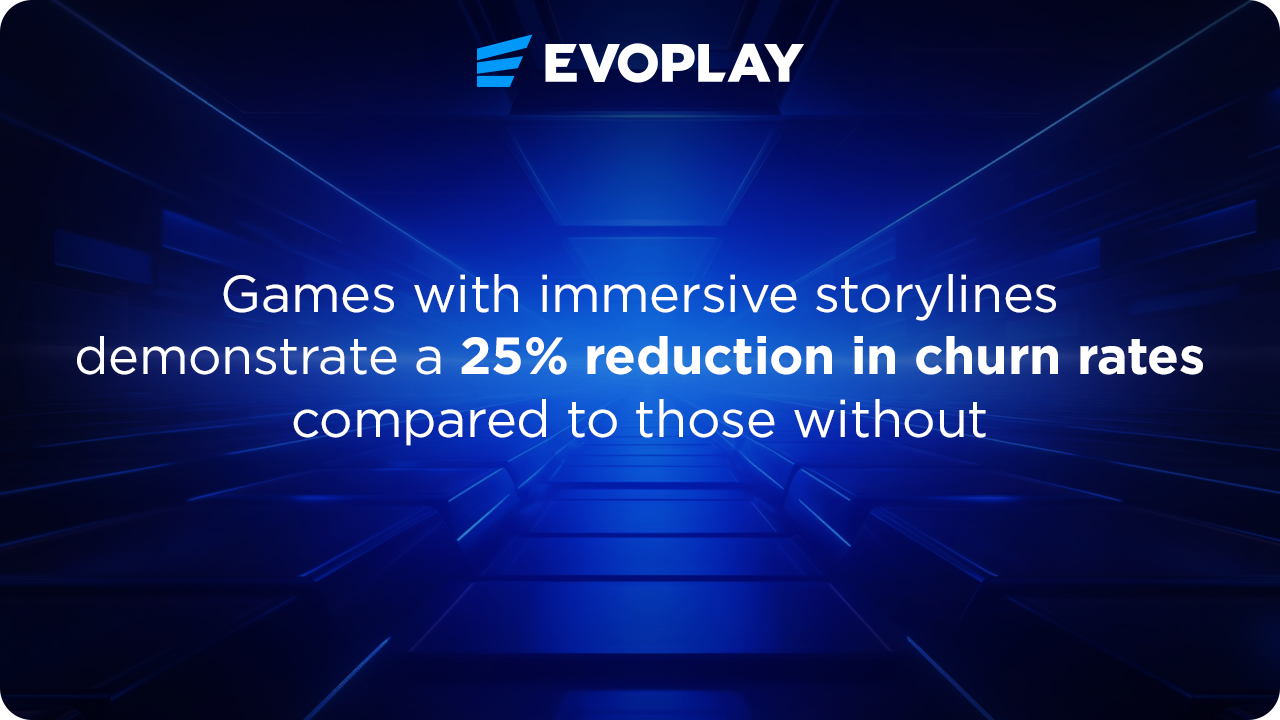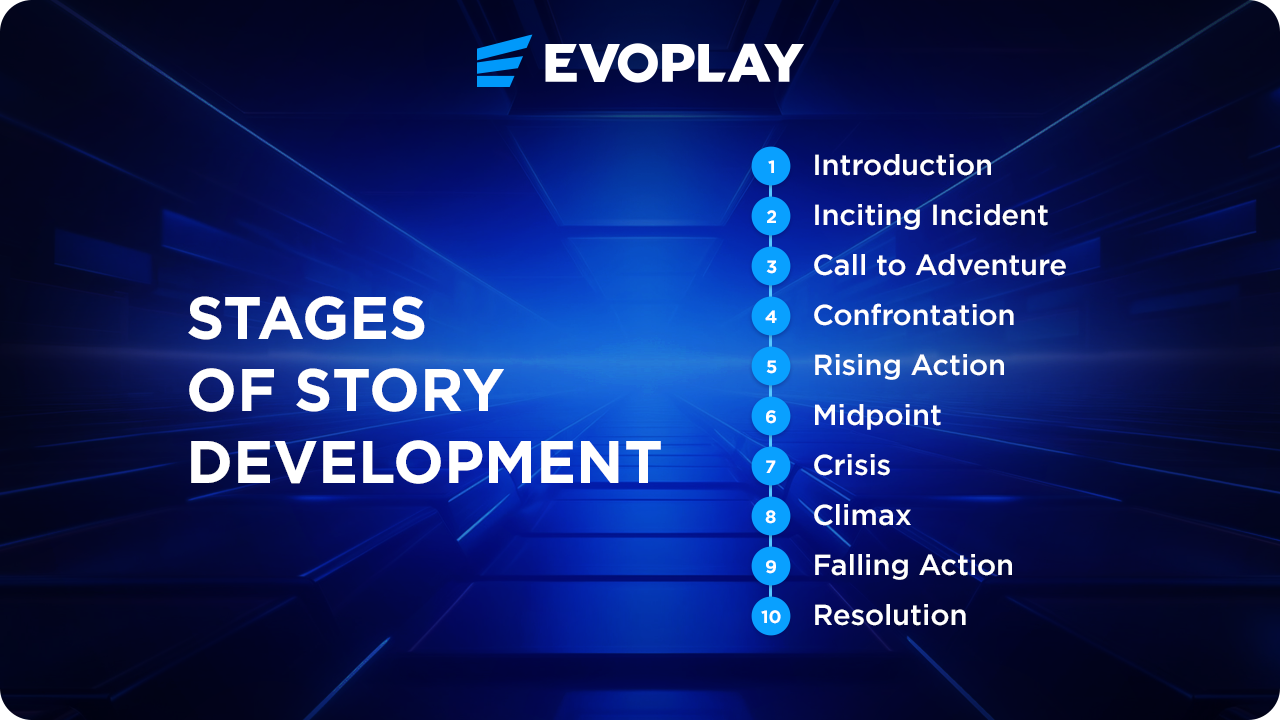Everyone has a story. But not everyone has the knack for sharing it effectively. The same is true with online casino games – each one could potentially harbour a unique tale. And it’s up to a game producer to create more than just a bunch of rules. By building a fictional world and tapping into the art of storytelling, you’re basically pulling the strings on how players act and react within the game.
Read between the lines to understand the storytelling value
Recent industry studies indicate that games featuring well-defined storylines boast an average of 30% higher player retention rates. These statistics underscore the undeniable link between narrative engagement and player commitment, positioning storytelling as a key driver of a gaming product’s success.

Storytelling is the game’s ability to keep players’ interest hooked. A captivating story contributes to a sense of attachment, prompting players to return for the next mission or challenge. Consequently, high retention rates become a testament to its capacity to build a loyal player base.

Moreover, the impact extends to user acquisition metrics. Just as an enticing story attracts new readers, a game with a strong narrative appeal draws in fresh players.
A well-told tale becomes the marketing force that propels the game into the spotlight, ultimately reflecting in growth metrics related to acquiring a broader audience.
Psychology has an explanation for this
Neuroscientific research suggests that storytelling activates multiple brain areas, including those associated with sensory experiences, emotions, and motor control.
To make a long story short, at the heart of compelling narratives lies the ability to forge emotional connections with players.

This is how and with what storytelling enhances the emotional bond between a player and a game.
- Connecting with characters
Games often feature protagonists that players can emotionally connect with. When players form a bond with these characters, their experiences take on a personal touch.
- Player influence and choices
When players sense that their decisions carry weight and consequences, it adds a layer of emotional involvement. The impact is even more profound when these choices directly affect the characters’ fates or the overarching storyline.
- Dynamic storytelling
Dynamic storytelling is where the narrative adapts to the player’s actions. Player engagement boosts as the story responds to their choices and actions.
- Visual expression
Visual elements, such as character animations, facial expressions, and environmental design, play a crucial role in conveying emotions.
- Pacing and tension
Effective pacing in storytelling builds tension and emotional impact. Games skillfully blend slower, reflective moments with fast-paced action sequences to modulate the player’s emotional experience. Well-timed revelations and plot twists contribute to emotional highs and lows.
- Universal narratives
Games that explore universal themes, like love, friendship, and overcoming adversity, resonate strongly with players. When a narrative touches on themes that they can relate to personally, it elicits a more profound emotional response.
Guide to crafting cohesive narratives in games
The structure of game stories may vary, but they all lean on these basic pillars:
- Introduction of the main characters and the setting.
- Inciting incident, something disrupting the normal routine happens, setting the story in motion.
- Call to adventure – the characters are presented with a challenge or an opportunity that requires them to embark on a journey.
- Confrontation-rising action: the main characters face a series of challenges.
- Midpoint – a significant event or revelation that changes the course of the story.
- Crisis – the characters confront their biggest obstacle or conflict.
- Climax, when characters face the ultimate challenge, and the story reaches its most intense point.
- Falling action.
- Resolution – the story ends with the characters experiencing transformation or change.

Telling tales in casino games illustrated
You can weave a storyline into any casino product, but instant games provide an ideal framework for crafting engaging narratives. Unlike traditional slot setups with fixed reels and rows, the instant game format offers greater flexibility.
Let’s look at a few examples. First, Penalty Shoot-out: Street, a football-themed instant game. It incorporates important storytelling elements, playing on the global love for football. What’s neat is the setting – it gives off this awesome ‘success story’ vibe, sparking a sense of self-belief and ambition. Players find themselves on a street football pitch, where soccer enthusiasts train, dreaming of lucrative contracts. This storyline engages players by making them feel part of a journey towards their own goals.
Another compelling example is Mary’s Mining Mania, a crash game that unfolds the narrative of Mary, a young and adventurous gold hunter who has inherited her grandpa’s mine. Her old man was a pro at finding gold and dedicated his whole life to it. In a nod to him, Mary decides to keep the family legacy alive, taking on the challenge of exploring the mine. The story hits on classic themes like family values, a bit of an ‘evergreen’ gambling theme – the treasure hunt, and the whole journey of overcoming challenges to reach a goal. The game’s captivating storytelling catapulted it into Evoplay’s top 3 instant games, measured by the GGR metric.
As the festive season kicks into high gear, we came up with the idea of Christmas Crash. In this instant crash game, we explore the enchanting tale of holiday magic, where Santa Claus and his team of reindeer joyfully deliver gifts to well-behaved individuals. However, even in the best stories, challenges arise – Santa’s sleigh might face obstacles like a broken exhaust stack, colliding with birds, or even getting hit by fireworks. The emotional connection is strengthened by the players’ own memories and experiences of the holiday season, making the game a meaningful and resonant part of their festive celebrations.

In iGaming, a compelling storyline can get a serious boost from the technical side. The right tech approach empowers developers to craft an entertainment product where mechanics and features seamlessly complement the narrative. What’s even more exciting is how it ramps up the interactivity of the gaming experience. It’s the player who is the one pulling the strings, the player triggers features that lead to specific outcomes.
It’s all about giving players a direct response to their actions, making the gaming process more immersive and dynamic.
Just to paint a quick picture of the story-mechanics bond, let’s get back to Penalty Shoot-out: Street. You can pick where on the net you want to send the ball, aiming for that perfect shot to score a goal. If you nail it, your character might land a seven-figure contract from a football agent and join the ranks of soccer celebs on a team. The ball-pointing mechanics provide players with a sense of control over the character’s destiny, enhancing the overall story development.
From another angle, the game’s plot becomes a natural tutor for players, showcasing through its storyline the instinctive ways to grasp the mechanics to navigate within the game.
So, how to create that winning story for a casino game?
Have you ever wondered why filmmakers are so obsessed with translating narratives of games onto the cinematic canvas? It’s pretty straightforward – some games’ high-quality storytelling has players already emotionally invested in the characters and storyline. So, it’s a pre-established fan base tuned to a familiar behaviour – immersion in this story. A gold mine for moviemakers, straight-up turning into dollars. One of the recent examples is The Last of Us, a post-apocalyptic TV series born from the renowned video game franchise.
Good storytelling in casino games that draws crowds of fans includes:
- engaging plot;
- memorable characters;
- world-building;
- immersive mechanics & features;
- player agency;
- pacing;
- emotional resonance;
- visual and audio elements;
- themes and symbolism.
According to a survey by Content Marketing Institute, 92% of marketers view storytelling as a valuable business asset. Stories always matter because a good story is a powerful tool that can turn a gaming product into a distinct world which players want to explore.
This is where storytelling transforms into storyselling.




























